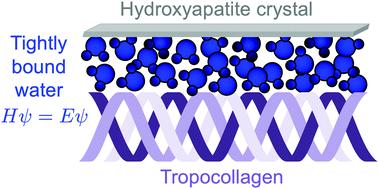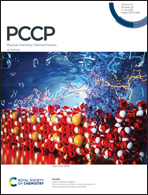Environment-controlled water adsorption at hydroxyapatite/collagen interfaces†
Abstract
Water contributes to the structure of bone by coupling hydroxyapatite to collagen over the hierarchical levels of tissue organization. Bone water exists in two states, bound or mobile, each accomplishing different roles. Although many experimental studies show that the amount of bound water correlates with bone strength, a molecular understanding of the interactions between hydroxyapatite, collagen and water is missing. In this work, we unveil the water adsorption properties of bone tissues at the nanoscale using advanced density functional theory methods. We demonstrate that environmental factors such as collagen conformation or degree of confinement, rather than the surface itself, dictate the adsorption mode, strength and density of water on hydroxyapatite. While the results derived in this paper come from a simplified model of bone tissues, they are consistent with experimental observations and constitute a reasonable starting point for more realistic models of bone tissues. For example, we show that environmental changes expected in aging bone lead to reduced water adsorption capabilities, which is consistent with weaker bones at the macroscale. Our findings provide a new interpretation of molecular interactions in bone tissues with the potential to impact bone repair strategies.

- This article is part of the themed collection: 2021 PCCP HOT Articles


 Please wait while we load your content...
Please wait while we load your content...